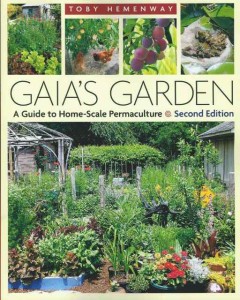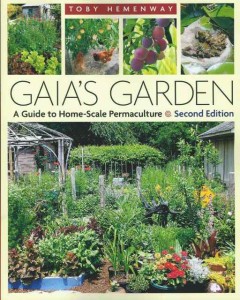Gaia’s Garden, by Toby Hemenway
This book is a sort of gateway book into the world of permaculture. With a brief description of the core principles of permaculture, you can get an idea of how to begin thinking the way a permaculturist would in the design of your garden/food forest. Hemenway lays out the basic ideas of permaculture without going into great detail… enough information to be useful, but not so much that you become bogged down in minutiae. Once he lays out the general ideas of the underlying theory, he proceeds to give real-life examples of how the ideas have worked in various locales.
Using permaculture principles in determining garden layout, harvest/storage of water and sunlight, plant biodiversity, a home garden can become less labor intensive and more productive. This book gives many useful ideas for making this happen in your own back yard.
I particularly loved the examples of garden layouts showing non-traditional designs. By using a keyhole gardening bed, you can minimize the space needed for the garden path and maximize growing space (while making the garden more interesting and appealing as well). The herb spiral is another idea that will add beauty and usefulness to the beds right outside the back door.
The theory of zones and how they impact the permaculture design is also discussed, with examples illustrating the ideas. He even shares a zone layout example for a typical 1/4 acre suburban lot that is highly productive.
From design of the space, he moves on to helping with building up the soil. I plan to use his sheet mulching system when setting up our gardens in New Mexico, and will no doubt be referring back to his book often when planning and laying out the garden there.
From plant recommendation, to orchard planning… from attracting helpful insects and birds to chicken tractors, the author puts forward many applications of permaculture principles you can implement at home. The book offers a wonderful appendix with excellent resources including plant suggestions for the various permaculture layers.
This book is a very excellent book to introduce the ideas of permaculture and sustainable food production. I highly recommend it, especially to those who are unfamiliar with permaculture principles. It’s easy to see why this book continues to be a best-seller.


